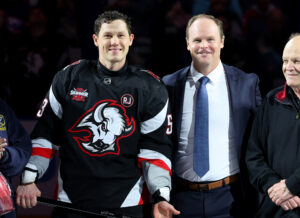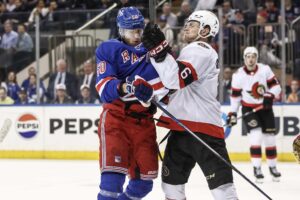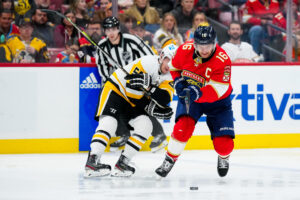Training camps open on Monday. There’s a lot packed into that brief and deceptively simple sentence. There’s some trepidation, some optimism, and a lot of eagerness on the part of players and fans in Phase Three. We can see the plans for training camp and for the Stanley Cup playoffs themselves. But what we haven’t seen yet is how will look to fans. With none allowed in the arena, what will the NHL return to play broadcast look like for the rest of us?
The NHL Return to Play Broadcast May Look Different
The Schedule
With the NHL players and governors both ratifying the Return to Play proposal, it’s full steam ahead – cautiously – for the league. The planned schedule means we’ll be seeing professional hockey differently than we ever have before. Outside of pee-wee tournaments – we’re sure there are a LOT of parents having flashback exhaustion right now – three games a day in a single location just isn’t done. That they are trying to pull this off during a pandemic is walking a tightrope blindfolded.
They don’t have much choice if the league is determined to play a full schedule next year. To do that and finish before the Olympics is going to make for a rushed season that’s still full of question marks. That means three games in each location each day, starting at noon, 4:00 pm, and 8:00 pm local time. That’s approximately 13 hours of hockey a day until teams start getting eliminated.
Someone’s gone and set fire to that tightrope.
The Sights
Before teams arrive at each hub, there will be teams of carpenters building platforms around the rinks. The camera angles are going to be such that fans at home have never seen before, and will almost certainly include the “flying cameras” that make regular appearances in the outdoor games. We don’t know which crews are going to be inside the rinks, but there will be no dearth of options for the editors.
One of the stranger side effects with a lack of fans is turning the seating into a giant green screen. Advertisers have been using digital boards and ice for years, but a digital audience? This will be a unique opportunity for them. That’s a LOT of square footage available – if the NHL sells it. Another option is going with an illusory audience, a la video games. They can be changed to suit whichever teams are playing, showing, say, half the stadium supporting each team.
The Sounds
Phase Three insists on media distancing appropriately or having barriers between them and the players. Phase Four kicks them completely out of the bubble, making them a Group Five category with “no contact with Groups 1-4.” With the editing bay or studio representatives being outside, how many broadcasters are going to bother sending anyone? These days there is little difference between sitting 100 metres away and 1,000 kilometres away. Local studios are going to have the option of doing not only their own colour and play-by-play but also the sounds of the game itself.
And about those sounds. A few things have been proposed, like piping in pre-recorded fan sounds or a variety of music. Music could be awkward, depending on broadcast rights in differing markets and who is responsible for paying them. Perhaps the league will go with the bare-bones approach of hanging mics and leaving it at that. If so, they’ll have to put it on a time delay for the sake of their audiences for more than one reason. It’s not just the obvious swearing, but making sure teams don’t have their plans hitting the feed. Coach’s instructions have to stay at the bench, and no one’s sure how voices are going to echo without an audience.
On the other hand, the more of this we get, the better.
The Players
No dress code inside the bubble. ‘Nuff said.
Main Photo:






